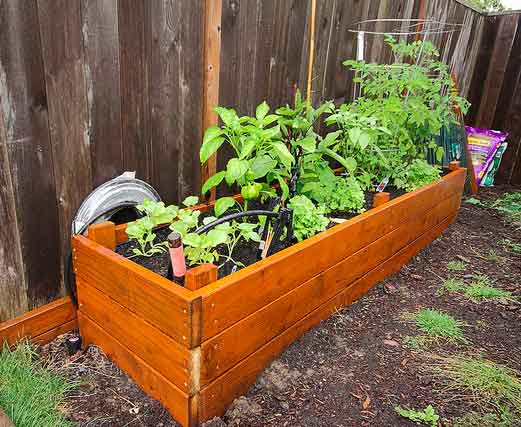It’s springtime and I’ll be out doing some planting today. Yesterday, at the farmers market, I picked up four seedlings: Pepper, Heirloom Tomato, Thai Basil, and Mexican Squash.
Before getting started I looked up what a ‘raised bed’ was. I had been hearing a lot about them and was wondering why they’re so popular. Turns out they have several endearing features:
- Conserve water
- Extend the planting season
- Reduce weeds
- Reduce the need to use poor native soil
- Higher yields
- Serve as a barrier to pests such as slugs and snails
- Can be planted earlier in the season because the soil is warmer when it is above ground level.
Raised bed gardening is a form of gardening in which the soil is formed in 3 – 4 foot wide beds, which can be of any length or shape. The soil is raised above the surrounding soil (approximately 6 inches to waist-high), is sometimes enclosed by a frame generally made of wood, rock, or concrete blocks, and may be enriched with compost.
The vegetable plants are spaced in geometric patterns, much closer together than conventional row gardening. The spacing is such that when the vegetables are fully grown, their leaves just barely touch each other, creating a microclimate in which weed growth is suppressed and moisture is conserved.
Additionally, waist-high raised beds enable the elderly and handicapped to grow vegetables without having to bend-over to tend them.
via Wikipedia
// Photo via mccun934
